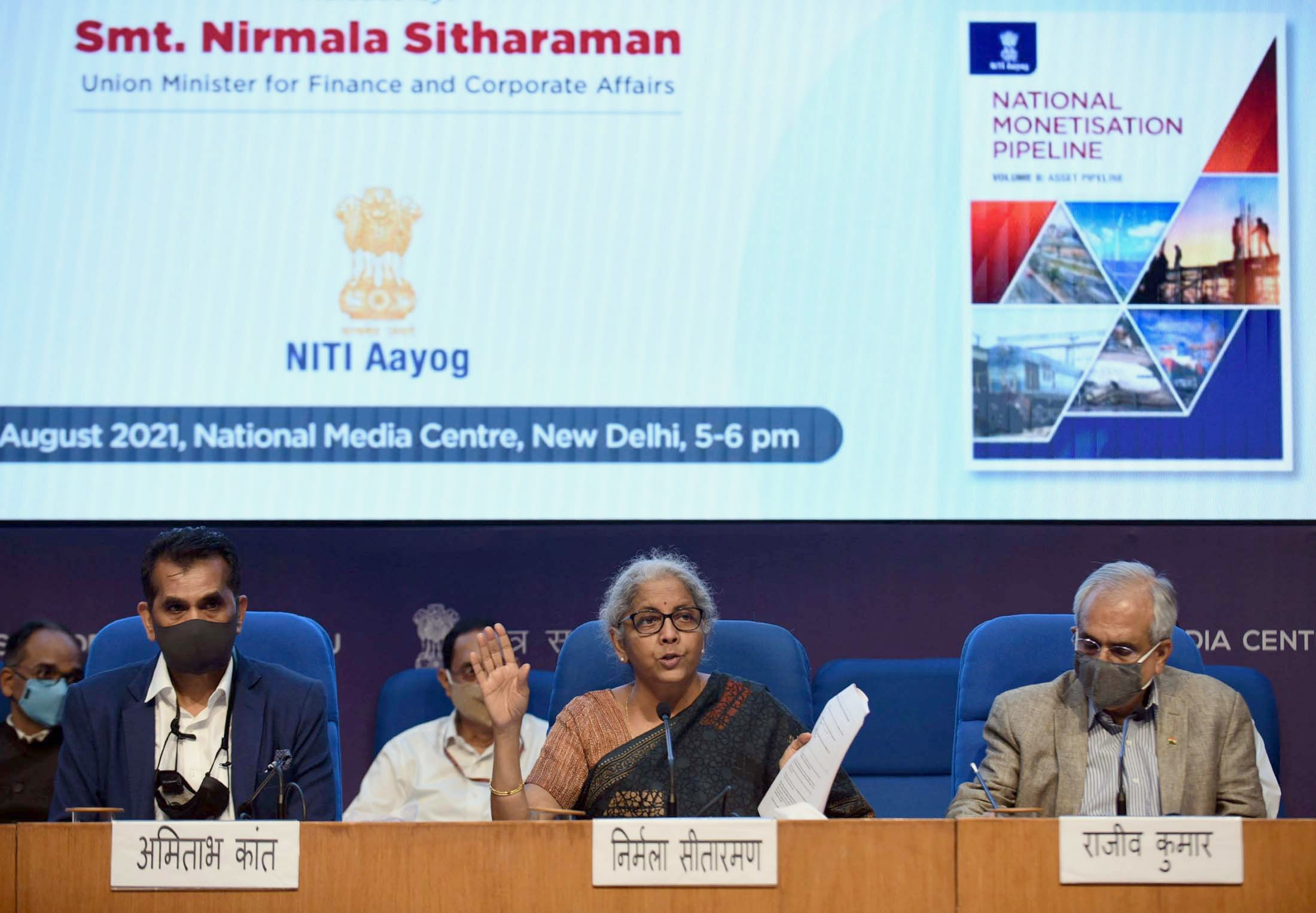Summary
India has announced the National Monetisation Pipeline to monetise brownfield infrastructure assets in several sectors. The innovative strategy aims to raise five to six per cent of resources required for the National Infrastructure Pipeline. Its success in attracting investors will depend on the clarity of contracts and credibility of regulators.
Objective and Approach
The National Monetisation Pipeline (NMP) is one of three avenues identified by the Indian government to raise resources to finance the National Infrastructure Pipeline (NIP). The Union Budget for financial year (FY) 2021-22 had specified these avenues. These include creating a development financial institution, monetising existing infrastructure assets and expanding capital expenditure in central and state budgets. The NIP envisages a total investment of ₹111 lakh crore (S$1.55 trillion) over the period FY2020-25. The NMP is expected to provide five to six per cent of the aggregate capital expenditure for the NIP.
To be overseen by the NITI Aayog (National Institution for Transforming India), in collaboration with line ministries, central government agencies and departments, the NMP identifies ‘core’ assets of the central government enterprises that are currently being used to provide various infrastructure services to the public. These existing or brownfield assets are chosen after considering their current revenue generation, commercial potential, investor interest and rate of utilisation.
Indicative monetisation values of the chosen assets reflect the quantum of private investments required to operate and maintain these assets over their transaction life. The actual monetisation value and its realisation would differ from the indicated value due to various factors (for example, final feasibility studies, timing of transaction and investor interest). The NMP would employ different monetisation approaches (for example, market approach, book value approach and capital expenditure approach) for assets in different sectors.
Sectors and Assets
The NMP follows the plan to monetise assets announced in the Union Budget for FY2021=22. The Budget had specifically indicated several sectors and state enterprises whose assets were to be monetised. These included roads (National Highways Authority of India); electricity (Power Grid Corporation of India Limited); gas (Gas Authority of India Limited); oil (Indian Oil Corporation Limited and Hindustan Petroleum Corporation Limited); aviation (Airports Authority of India); railways (Indian Railways); and warehouses (Central Warehousing Corporation and National Agricultural Cooperative Marketing Federation of India).
The announced strategy is consistent with the direction provided in the Budget. The top five sectors accounting for more than 80 per cent of the assets to be monetised are roads (27 per cent), railways (25 per cent), electricity (15 per cent), oil and gas (eight per cent) and telecommunications (six per cent). The remaining sectors include warehousing, mining, aviation, ports, sports stadiums and urban real estate. Together, the indicative monetisation value of brownfield assets identified in the chosen sectors is ₹6 lakh crore (S$113.14 billion), which is 5.4 per cent of the total capital expenditure for the NIP, and around 14 per cent of the central government’s planned outlay of ₹43 lakh crore (around S$808.15 billion) in the NIP. The assets are to be monetised in a phased fashion over a period of four years during FY2022-25.
The NMP has identified extensive sector-specific asset targets reflecting the government’s intention to proceed fast. In roads, for example, 26,700 kilometres are planned to be monetised, including existing national highways, as well as some of those coming up. In railways, various assets identified include 400 stations, 90 passenger trains and 1,400 kilometres of railway track. Similar well-defined targets have been laid out for other sectors.
Will Private Investors be Excited?
The NMP is distinctly innovative in its efforts to mobilise resources. It distinguishes itself from resources raised through outright privatisation of government assets. Assets monetised through the NMP would continue to be owned by the government, while operational, maintenance and revenue rights would be passed on to private investors.
Generating investor interest would require addressing some challenges. The first is the structure of contracts for the private-public-partnership arrangements for the identified assets. Most contracts are likely to be of the Build-Operate-Transfer kind with variations depending on the sectors. Rigid contracts with stringent conditions will discourage investors. From the perspective of foreign investors, contractual clarity to accommodate unforeseen operational risks that might affect revenue prospects of the infrastructure projects, such as change in governments, is essential. These risks, including provisions for settling disputes and arbitration, must be clearly specified.
The second challenge is in fixing specific sectoral regulators to oversee the processes of monetisation. Credible regulators with technical experts would assure investors. The coordination between sectoral regulators, the line ministries and NITI Aayog would remain a further matter that would need to be addressed.
. . . . .
Dr Amitendu Palit is a Senior Research Fellow and Research Lead (Trade and Economic Policy) at the Institute of South Asian Studies (ISAS), an autonomous research institute at the National University of Singapore (NUS). He can be contacted at isasap@nus.edu.sg. The author bears full responsibility for the facts cited and opinions expressed in this paper.
Photo credit: pib.gov.in
-
 More From :
More From :
-
 Tags :
Tags :
-
 Download PDF
Download PDF



